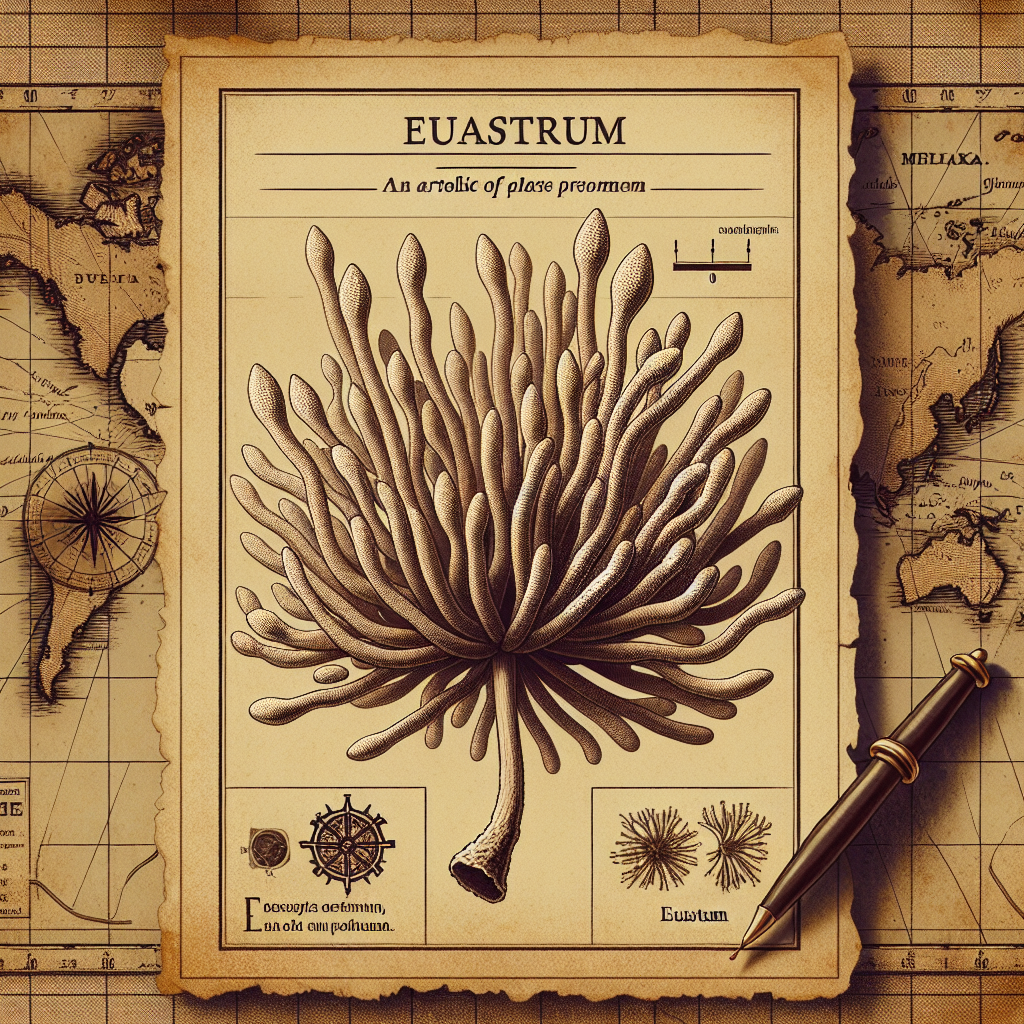Euastrum: The Jewel of Microscopic Waters
Imagine a microscopic world teeming with life forms so intricately designed, they could rival a jeweler’s finest creations. Welcome to the captivating domain of Euastrum, a magnificent genus of single-celled, photosynthetic organisms known as desmids that call freshwaters their home. These tiny architectural wonders, who have been flourishing for millions of years in ponds, ditches, and lakes around the world, have much to teach us about biology, evolution, and the health of our ecosystems. But what exactly makes Euastrum so special, and why should we be buzzing with excitement over these minuscule marvels? Let’s embark on this scientific journey with an optimistic outlook on the wonders of life unseen by the naked eye.
Who Are These Microscopic Wonders?
Euastrum belongs to the Desmidiales order, part of the green algae family. Known for their symmetrical beauty, Euastrum forms are most renowned among scientists for their intricate cell structures and vibrant green hues. First observed under early microscopes in the 19th century, these fascinating creatures have continued to pique the curiosity of researchers ever since. Their complex forms and sheer biodiversity make them a central focus of studies on cell development and evolutionary biology.
What Makes Euastrum Special?
At first glance, Euastrum's allure lies in their unmistakable symmetry and ornate shapes. Each cell is generally composed of a semi-cell – two mirror-image halves that seamlessly join together. This symmetry is not just an aesthetic trait but a crucial part of their biology, assisting them with balance and nutrient absorption in their aquatic habitats. Further, their cell walls boast incredible detail reminiscent of crystal latticework, which not only protects these organisms but also aids in flotation and interaction with their environment.
Euastrum have developed a remarkable method of reproduction – involving both sexual and asexual processes. Asexual reproduction by simple cell division is efficient and enables rapid population growth. Meanwhile, sexual reproduction occurs through conjugation, where two cells merge to exchange genetic material, ensuring genetic diversity and adaptability.
When Did We Learn about Euastrum?
Our understanding of Euastrum dates back to the advent of microscope technology in the 17th century. Yet, it wasn't until the late 1800s and the pioneering work of botanists like Ehrenberg and the Dillwyn family that their intricate structures were thoroughly documented and classified. Fast forward to modern times, this tiny powerhouse continues to be an object of fascination, as advanced microscopy and molecular biology techniques unravel their secrets.
Where Do Euastrum Live?
These tiny architects are found across the globe, thriving in an array of freshwater environments. Their preference for neutral to slightly acidic waters means they are often indicators of water quality, living in harmony with a specific set of conditions. Each species, with its unique environmental adaptions, can tell us about the ecosystem it inhabits: from mineral content to pH levels, and even the health of the water body.
Why Should We Care About Euastrum?
Euastrum and other desmids are essential components of freshwater ecosystems, contributing to the ecological balance by producing oxygen through photosynthesis and forming a foundational part of aquatic food webs. But their significance stretches beyond ecological services.
As bio-indicators, these microscopic wonders help scientists monitor environmental changes. By studying variations in their populations and distributions, we can gauge the effects of pollution, climate change, and other anthropogenic impacts on ecosystems. Moreover, understanding their cellular mechanics can inspire biotechnological innovations and contribute to fields such as pharmaceuticals and environmental science.
Exploring the Intricacies of Euastrum
Diving into Euastrum’s microcosm offers insights into cellular architecture and complexity. Their cell walls, composed mainly of cellulose and pectin, are constantly being remodeled as the organisms grow and divide. This provides active sites for numerous bioactive compounds and might soon unlock new avenues in materials science and pharmacology.
Their photosynthetic prowess, evolving under various environmental stresses, positions them as potential candidates for biofuel production. Just imagine, these tiny marvels could one day fuel our vehicles!
Additionally, Euastrum's genetic blueprint is a gold mine for scientists. By comparing their DNA to other plant life, we can better understand plant evolution and the history of life on Earth. Insights gleaned from these studies could pave the way for developing crops that are more resilient to changing climate conditions.
The Future Is Bright
While our planet faces pressing environmental challenges, microscopic allies like Euastrum underscore the resilience of life and the interconnectedness of ecosystems. Their study nourishes our understanding of biology and provides a hopeful lens for envisioning the sustainable stewardship of our world's resources.
In a world where the smallest of organisms can ripen the biggest breakthroughs, Euastrum embodies the enigma and elegance of life at its tiniest scale. So, as we continue to explore our watery realms, let us not forget the humble yet profound existence of these algae and what they represent for science and humanity. Their story is a vibrant chapter in the grand book of life that continues to inspire us.

